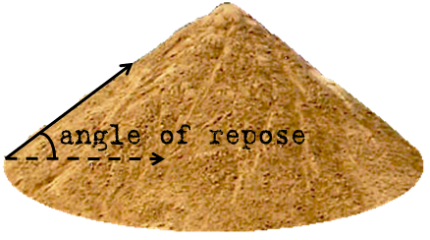WyoDoug
Well-known member
Fair point... everyone has a plan until they get punched in the face... hunting can do that do you.
Really true. A plan is just a starting point. Reality usually changes that plan rather quickly.
Follow along with the video below to see how to install our site as a web app on your home screen.
Note: This feature may not be available in some browsers.
Fair point... everyone has a plan until they get punched in the face... hunting can do that do you.
Ok thanks you’re right I had just assumed enough grass coverage to be traversable but at higher elevations this must be an issue.Also consider this.

Angle of repose - Wikipedia
en.m.wikipedia.org
Most slopes over 35 degrees are likely to contain cliffs of some height of some kind of rock in order to overcome the maximum limits of angle of repose.
Thanks for this I’m not sure how I missed this post before.2020 will be my 4th year out west. I was always a map guy and spent a lot of time in the woods off trail, most of it in thick woods/alders/willow brush, etc. also peat bogs of MN which required some high stepping to get through. But dealing with the vertical while off trail is tough, and I think being able to read the topo and route finding is a big help.
I think I am better than most at navigating off trail, but last summer while scouting I accidentally came up through the purple spot on this map. 40-45+ degrees and it ended up being the worst 200 yards of hiking all year. It was thick trees and required crawling at times. So follow watch the map better than I was that day. 50 ft topo lines can hide a lot.
View attachment 129325
Ok thanks this makes sense. I did have a long distance stalk in mind when that post was made but I’m also reading Robby’s book that’s telling me not to walk very fast so who knows.I mean, if you spot and stalk hunt in the mtns, you do often have to consider time and distance. You may not be thinking can I hike 2 miles in 30 min... but you may have to consider if you can cross a basin to get to a herd of elk before it gets dark.
I assume @Bambistew is constantly trying to glass up sheep and then planning long stalks that may take hours or days depending on terrain.
"I have never gave much thought into how far I could hike in a certain amount of time other then the hike in in the dark. "
This seems only to be relevant if you are hunting from the truck, hunting somewhere flat, still hunting, or hunting from a blind or stand.
Time management during a hunt takes some time to figure out, no reason to act like it's a stupid conversation, especially for a new hunter.
If you are off the trail and in bad deadfall, you do not measure your speed in miles per hour. you measure it in yards per hour. and hope you hit double digits! Well, maybe not quite that bad, but it sure can be slow going.

The shadier the better as well as the deeper snows for sheds90%+ of the sheds I find are in downfall like that. I think the elk like to browse on the moss' and lichen in the downed trees, and then knock their antlers off while scrounging around.
DangYes. I call this my single most telling picture from my last elk hunt when someone asks how hard it was. This was in a section of woods we considered healthy compared to some others...

I attempted to use the search function for this as I'm sure it's been asked and answered. I'm hunting Idaho for the first time this fall. The relief is something I've never had the chance to hike before. My question for those more experienced than myself is 1) What is a practical distance to cover in a day? Clearly this is a really wide open question as it doesn't factor in slope and ground cover but looking for general guidelines if possible. 2) What is a comfortable slope to try to stick to when route planning in onXmaps? It seems very easy to draw straight lines in onXmaps and then realize they are 28% ground slopes. Using switchbacks this can be reduced so I'm just wondering what people try to stick to when gaining elevation.